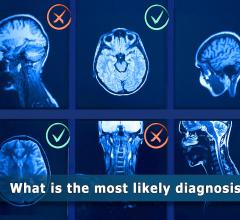BLOG: Zero-footprint Viewer with Server-side Rendering Pushes Imaging Forward During Pandemic

The coronavirus pandemic has changed the way radiologists read images and today facilities struggle to define a “new normal” way to work. Given today’s current work climate, remote reading is becoming more prevalent as more medical professionals are working from home. Radiologists are increasingly utilizing teleradiology and are looking for robust technology infrastructure to achieve the same productivity at home as in the office.
Konica Minolta’s Exa platform provides the infrastructure for managing data across the imaging workflow. Its advanced features and toolsets provide both speed and workflow efficiency, wherever the user may be. Exa PACS combines server-side rendering with a zero-footprint viewer to offer full diagnostic toolsets and viewing capabilities from any computer, tablet or smartphone. Zero-footprint allows for immediate viewing on any consumer grade PC with no downloads, plugins or installations necessary.
“It’s just like going to a web site, whether you are going to do a Google search or logging on to your banking web site,” explained Kevin Borden, Vice President of Product at Konica Minolta Healthcare. “You type in a URL, you get logged in with your credentials and you’re ready to read.”
Server-side Rendering Speeds Workflow
The zero-footprint viewer with server-side rendering means the server processes the images and then transmits them to the display device, without large file transfers. That makes it easy to use, and easy on the network on which it runs. “In a traditional system — a client-based technology that renders the data on the client side — all the data has to be sent to the workstation before you can read it,” Borden said.
With the Exa platform’s server-side rendering, the server is doing all the work instead of each individual workstation. DICOM data does not need to transmit to each workstation because it is all done at the server, which means large volume computed tomography (CT) exams open immediately with no prefetching required. In addition, its server-side rendering technology gives it the required speed needed for remote reading.
With server-side rendering, image files are not transmitted to workstations so there is zero latency and no network strain. This made the platform an ideal solution when the COVID-19 pandemic hit the imaging industry. “Everyone has a system, whether it’s a RIS or a HIS or a PACS, and all of that is over a network. So when you can reduce traffic, it benefits not just your radiologist and your end user, but also benefits the IT department,” explained Borden. “Combine this with zero-footprint, where nothing is installed and no data is stored on the workstation itself. The data that is in motion is encrypted using basic SSL technology over an https web site.”
There is tremendous value to having PACS, RIS and billing all in one place. “We like to call it a platform that has modules inside of it,” said Borden. “It has a RIS system built in, plus PACS and billing. Combining all that together is a powerful workflow engine that makes the platform run.”
Workflow Customization and Efficiency
For Konica Minolta, customizing workflows to suit customer needs is a necessity. Efficiency is built into the system, and features like dashboard analytics, chat and the workflow builder help customize the experience to work for each user.
The order of operations for an imaging study can vary drastically from business to business. Exa PACS allows the user to build a workflow based on specific facility needs. Users can choose from the drag and drop status options to design a preferred imaging workflow. The ability to define the entire process step-by-step allows for an efficient and productive procedure.
The chat feature was designed as a communication and productivity tool for all users in the system — for example, when a technologist needs to double-check with the radiologist on image quality, or annotate a specific finding. Information can be shared with the radiologist in real-time so they can collaborate virtually together. This conversation is as intuitive as grabbing an icon and dragging it into the chat window, and it saves valuable time. Reports and images can be viewed within the chat feature.
“It’s a very efficient communication tool. Before you had to pick up the phone or send an email in order to communicate,” which took additional, valuable time, stated Borden. “With the Exa Platform, the common theme here is to make the system more efficient for each end user.”
The order of operations for an imaging study can vary drastically from business to business, and the Exa Platform allows each user to build a customized workflow based on facility needs. The ability to define the entire process step-by-step allows for the most efficient and productive procedure possible. It is with this flexibility that the Exa Platform is helping to advance radiology through technical innovation.
Editor's note: This blog is the first in a series from Konica Minolta on technical innovation. The next blog will feature artificial intelligence and building efficiencies.



 February 03, 2025
February 03, 2025 








